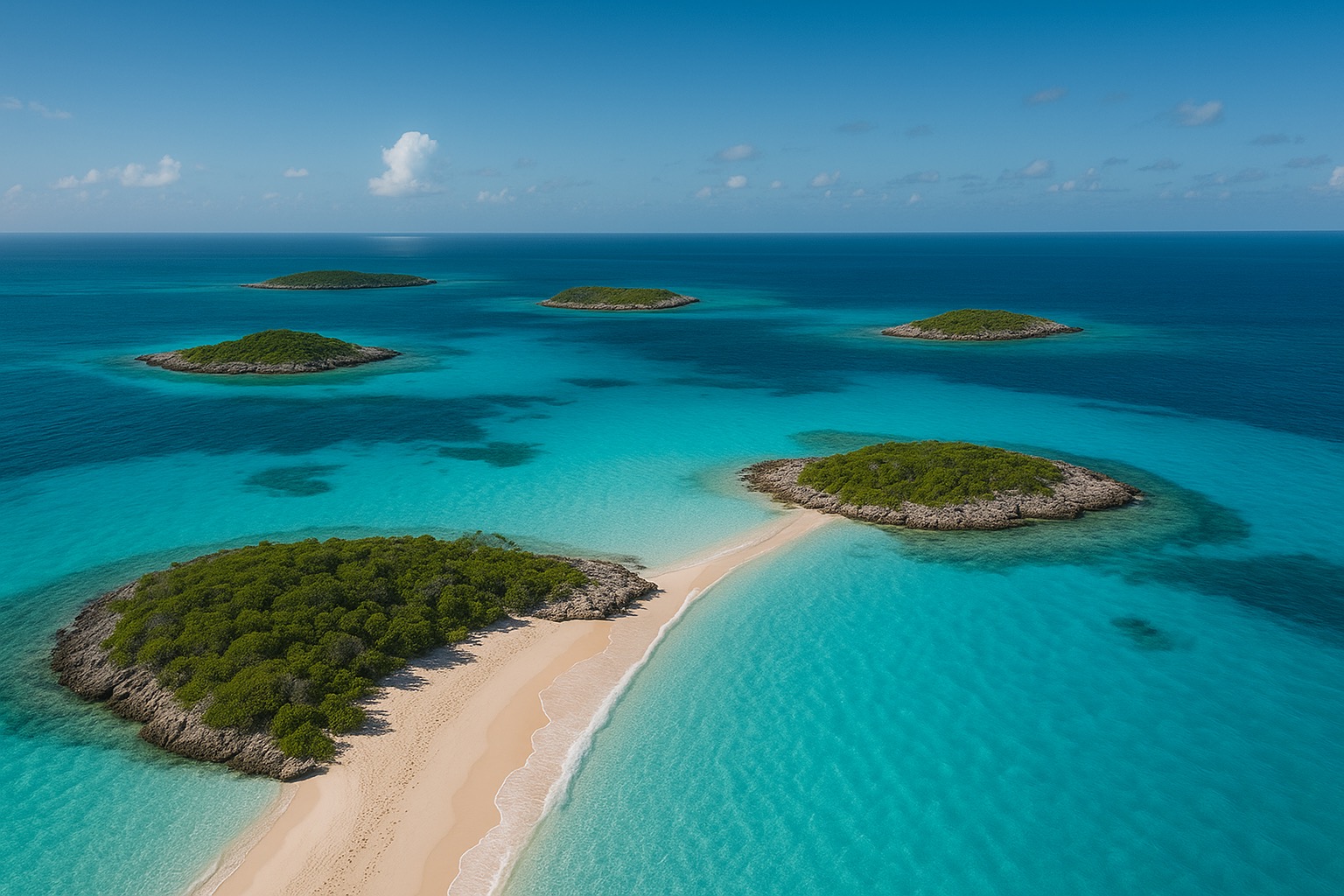
Faroe Islands vs Iceland: Discover the Wild North Atlantic’s Lesser-Known Treasure
The Faroe Islands sit quietly in the North Atlantic, often overshadowed by their larger neighbor, Iceland. This group of 18 rugged islands offers a raw, less-traveled version of northern beauty—steep cliffs, windy coastlines, and a culture shaped by isolation and the sea.
People often compare the Faroes to Iceland because of their shared Norse roots and landscapes. Yet, the Faroes are distinct in their smaller scale, tight-knit communities, and strikingly wild nature that feels untouched. Exploring the Faroe Islands means discovering a quieter, tougher northern edge where nature and tradition still dominate.
Geographical and Climate Overview of the Faroe Islands
The Faroe Islands lie in the North Atlantic, positioned roughly halfway between Iceland, Norway, and the United Kingdom. Despite their modest size—spread across about 1,393 square kilometers—the islands pack a powerful punch in terms of raw, untamed nature. The geography here tells a story written by volcanic forces and ocean winds, creating a setting that’s as dramatic as it is captivating. The climate plays its part too, shaping the islands with constant change and mild but often wet air. This part of the article takes a closer look at what makes the Faroe Islands’ landscape and weather so unique compared to Iceland’s expansive lava fields and glaciers.
Landscape and Terrain
The Faroe Islands’ origins lie in volcanic activity millions of years ago. Unlike Iceland’s vast lava plains and sweeping glaciers, these islands are mainly made up of steep cliffs, deep fjords, and towering mountains blanketed in vibrant green grass. The rugged terrain cuts sharply into the surrounding sea, offering a wild, raw view with every glance.
You’ll see fjords winding their way inland, carved by glaciers long melted away but still visible in the sharpness of every valley and coastal curve. The cliffs here drop dramatically into the ocean, creating sweeping vistas that feel untouched by modern life. The land is covered mostly in grass and moss, with only scattered patches of low shrubs—trees are rare, which adds to the stark wilderness vibe.
This terrain encourages exploration but demands respect. Trails often lead to hidden coves, seabird colonies, and isolated villages tucked under mountains. The green mountains contrasted with rocky outcrops create a striking scene that feels rougher and closer to nature than Iceland’s cooler, more glacial character.
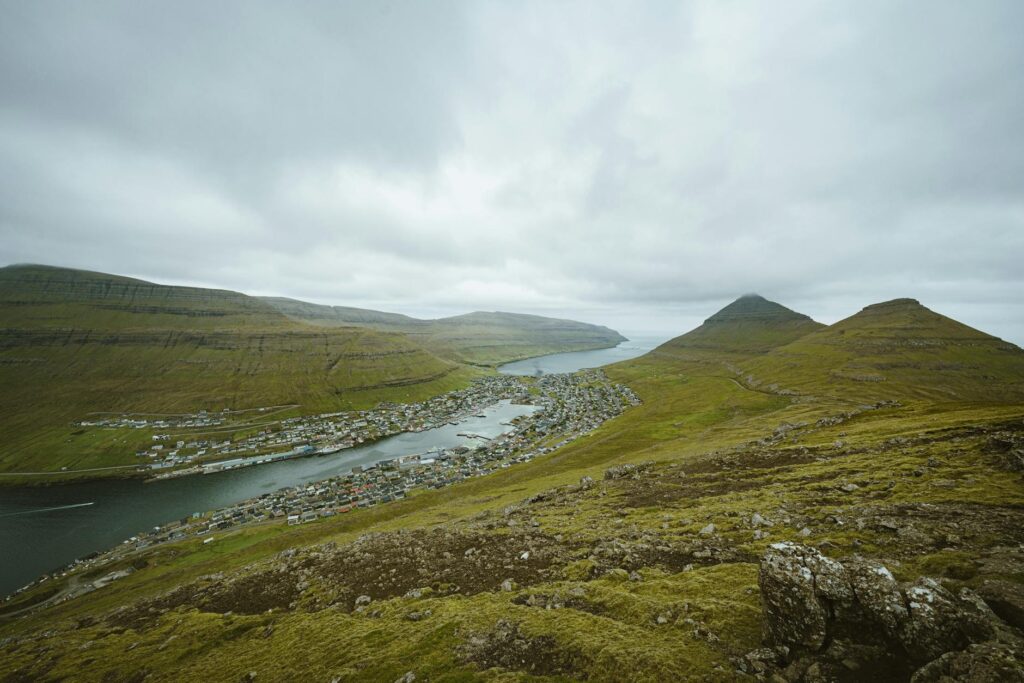
Photo by Gije Cho
Weather and Seasonal Variations
If there’s one thing to know about the Faroe Islands’ weather, it’s that it changes fast. People often say you can experience “several seasons in one day” here. Mornings might bring bright sunshine, only for clouds and drizzle to roll over the islands by afternoon, followed by a windy evening under a star-streaked sky. The islands sit in a subpolar oceanic climate zone, which means they avoid extreme temperatures but never quite settle into predictable patterns.
Temperatures stay mild through the year—rarely dropping below freezing in winter and hardly rising above 13°C (55°F) in summer. The surrounding ocean keeps things cool, damp, and windy. Expect regular rain and heavy cloud cover, with frequent fog layering the hills in mystic veils. Winds come straight off the Atlantic, sometimes fierce, shaping both the physical land and how locals live.
This weather delivers a lush, mossy landscape but also means visitors should pack layers and be ready for anything. The swift shifts in weather add to the Faroe Islands’ untamed personality, making every day outdoors feel like an adventure.
For more detailed weather trends and updates during your visit, check Britannica’s overview of Faroe Islands climate.
The combination of volcanic roots, towering cliffs, and shifting weather paints the Faroe Islands in bold strokes of nature, different from yet complementary to Iceland’s world. This rugged, green archipelago offers a raw encounter with the North Atlantic’s northern extremes, wrapped in soft mist and wind.
Flora and Fauna: A Unique Ecosystem
The Faroe Islands hold a special place in the North Atlantic as a natural refuge for a mix of seabirds, marine mammals, and a few land animals. Their unique location, surrounded by rough seas and steep cliffs, creates an environment where wildlife thrives quietly but distinctly. Compared to Iceland’s broader and more varied ecosystems, the Faroes offer a more concentrated and intimate encounter with nature. This section highlights the islands’ remarkable birdlife and marine species, along with the challenges posed by introduced animals and efforts to keep the native ecosystem balanced.
Birdlife and Marine Species
The Faroe Islands are a sanctuary for seabirds. Puffins, with their bright beaks and charming waddles, are among the most famous residents. These birds nest in vast cliffs during the spring and summer, drawing bird watchers and nature lovers alike. But puffins are just the start. Other migratory seabirds, such as guillemots, kittiwakes, and fulmars, fill the skies and rocky ledges with life from April through September.
The ocean around the Faroes is no less alive. The cold, nutrient-rich waters are home to several whale species, making the islands a prime spot for whale watching. Blue whales—the largest animals ever to live on Earth—pass through on their migratory routes, while killer whales (or orcas) hunt in the nearby waters. These marine giants are part of the islands’ living heritage, symbolizing the deep connection between the Faroese people and the ocean.
This vibrant bird and marine life doesn’t just charm visitors; it also shapes local culture and tradition, rooted in a long history of coexistence with nature.
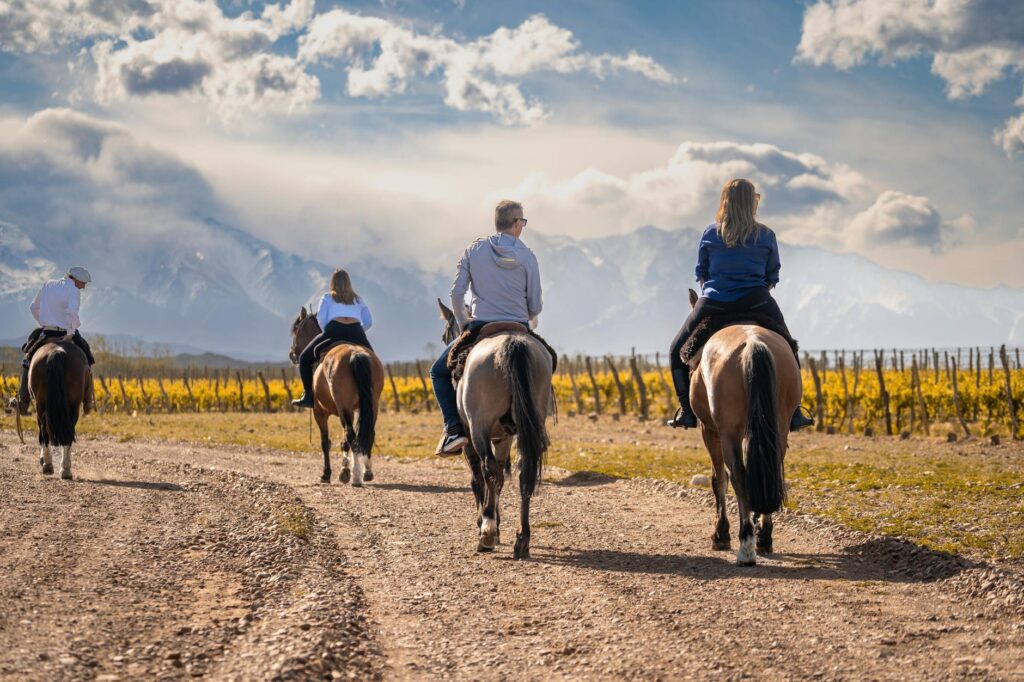
Photo by Tomáš Malík
Introduced Species and Conservation Challenges
The Faroe Islands’ wildlife faces delicate pressures beyond natural conditions. Humans introduced several species that have altered the ecosystem, sometimes in difficult ways. Mountain hares were brought to the islands decades ago, adapting well but changing some plant communities as they feed. Rats and mice, often hitching rides on boats, pose a serious threat to native birds by preying on eggs and young chicks.
Invasive invertebrates and plants also creep quietly into the environment, upsetting the fragile balance that native wildlife depends on. These species can outcompete indigenous plants and insects, leading to a drop in overall biodiversity.
Conservation efforts focus heavily on tackling these challenges. Monitoring programs track invasive species and native wildlife populations, while education campaigns raise awareness among locals and tourists. Additionally, the Faroese government and environmental groups work to control rat populations and protect important bird nesting areas. This ongoing work aims to safeguard the islands’ natural heritage, keeping its ecosystems as intact and healthy as possible.
Despite these issues, the Faroes maintain a resilient ecosystem, proving that even small islands surrounded by vast oceans can hold a unique and treasured biodiversity.
For more about the balance between tradition and conservation in the Faroes, see this Ecologist article on Faroese wildlife and culture.
Also, learn more about marine species in the North Atlantic at the OceanCare page on whale welfare.
Cultural Identity and Language
The Faroe Islands’ cultural identity is deeply intertwined with its history and language. The islands carry traces of their Viking past while nurturing traditions and a close sense of community. This connection shapes much of daily life, from education and communication to religion and customs. Understanding this helps paint a richer picture of what makes the Faroes unlike anywhere else—and sets them apart even from neighboring Iceland.
Historical Settlement and Population
The Faroe Islands were first settled by Norse Vikings around the 9th century. Norwegian emigrants, seeking refuge from King Harald I, reached the islands, followed not long after by settlers from Scotland and Ireland. These early populations laid down the cultural and genetic foundation still visible today. Archaeological studies reveal traces of earlier human activity too, but the Vikings were the ones who firmly established the Faroese way of life.
Today, the islands have just over 53,000 residents, making it a small but growing community. The capital, Tórshavn, is home to about 20,000 people—nearly half the population—acting as the main hub for culture, governance, and commerce. Remarkably, the Faroe Islands hold a high fertility rate compared to many European countries. This natural population increase contributes to maintaining strong, vibrant communities on the islands, even in remote villages.
The islands maintain a strong sense of tradition, with a population predominantly of Scandinavian and Celtic descent, reflected in everything from family names to cultural celebrations. The Evangelical-Lutheran Church remains central to life here, offering a spiritual anchor much as it has for centuries.
For more detailed history, you can visit the History of the Faroe Islands on Visit Faroe Islands.
Language and Education
The Faroese language is one of the most striking expressions of the islands’ identity. It descends directly from Old West Norse, which is also the root of Icelandic, Norwegian, and extinct languages like Norn. Faroese has preserved many Old Norse elements but also evolved uniquely over time due to geographic isolation and local influences.
Faroese sounds closer to Icelandic than to Danish but has its own distinct vocabulary and pronunciation. Both languages share a common ancestry, making them linguistic cousins, though Icelandic is often considered more conservative in preserving archaic Norse words.
In education, Faroese is the main language used for teaching young children. However, Danish plays a vital role too, taught in schools as a second language because of historical ties with Denmark. Most Faroese people speak Danish fluently, especially in professional and official contexts. English is widely learned as a foreign language, reflecting the islands’ openness to the wider world despite their remote location.
This trilingual ability shapes how Faroese people communicate, travel, and engage internationally, hosting a fascinating language dynamic on an otherwise small stage. If you’re curious about the Faroese language and its relation to Old Norse, Wikipedia’s summary on the Faroese language offers a good overview.
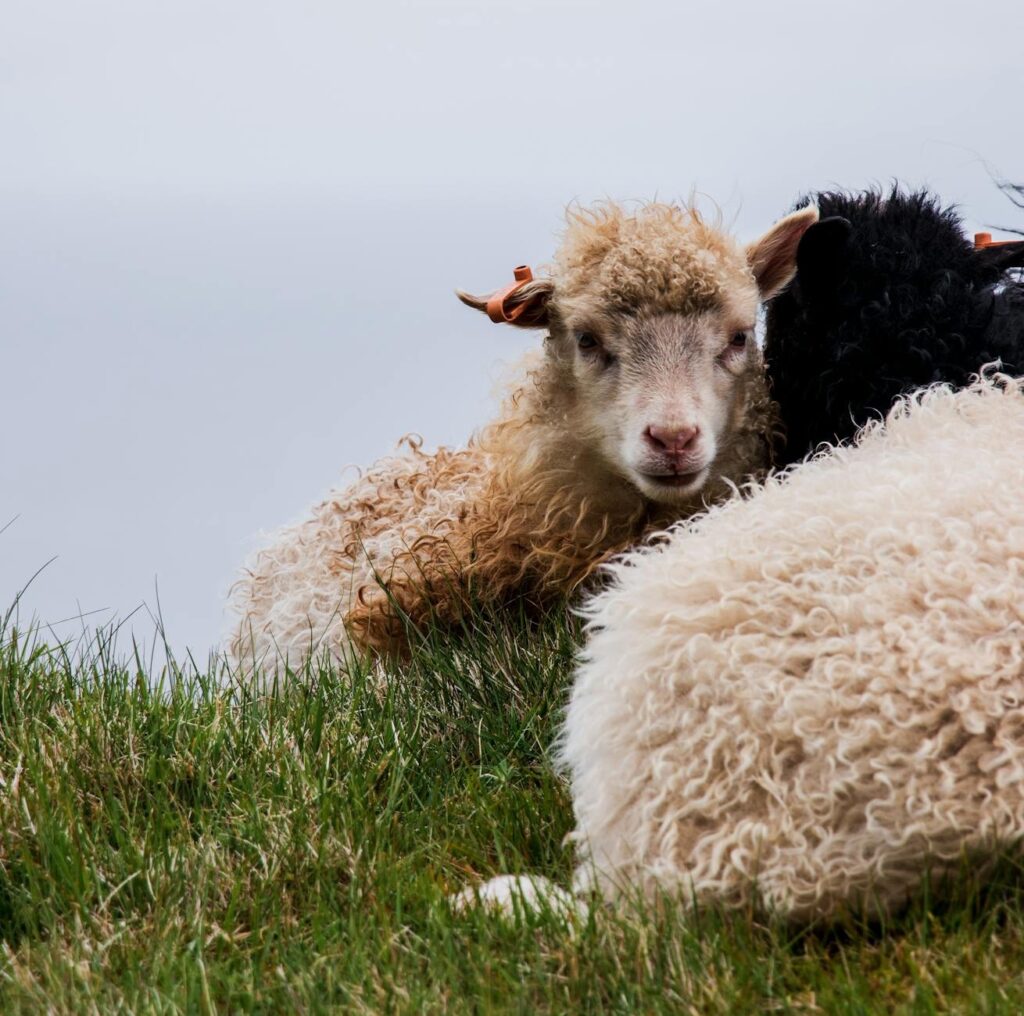
Photo by Quang Nguyen Vinh
These cultural threads—rooted in history, language, and community—help the Faroese stand apart as a people connected to their Viking roots but equally adaptive and modern in outlook.
Comparing Tourism: Faroe Islands vs Iceland
If you’re drawn to wild northern places but want a quieter adventure, the Faroe Islands and Iceland offer quite different experiences. Both are shaped by volcanic energy and ocean winds, but travelers find varied thrills and challenges depending on which island they visit. The Faroes charm those looking for rugged nature and fewer crowds, while Iceland attracts with its dramatic volcanoes and glaciers supported by a well-developed tourism scene.
Key Attractions and Outdoor Activities
The Faroe Islands shine in their raw natural beauty, with dramatic cliffs, fjords, and bird-filled skies. Here, hiking feels like stepping into a postcard you can almost touch. Trails like the iconic hike from Gásadalur to Bøur wind through laurel-green hills and overlook crashing waves. Birdwatchers flock here for puffins and guillemots nesting in sheer rock faces. Exploring the fjords here means peeking into quiet fishing villages hugged by mountains, and cliff walks reveal breathtaking panoramas often free from crowds.
Iceland, by contrast, offers earth’s power on full display. You wander among massive glaciers like Vatnajökull, stand beside thundering waterfalls like Gullfoss, and even hike over volcanic lava fields. Its geothermal pools such as the Blue Lagoon provide steamy, relaxing breaks in the middle of rugged scenery. The diversity is vast — from black sand beaches to bubbling mud pools.
If your idea of adventure is standing on a glacier and feeling the crush of ice beneath your feet, Iceland is the place. But if you want to trek quiet green ridges where seabirds wheel overhead and encounter nature untouched by busy tourism, the Faroes might just win your heart.
Travel Tips and Best Times to Visit
The Faroe Islands demand some planning. The weather shifts fast, so layers and waterproof gear are a must. Roads connect most islands via tunnels and bridges, but a rental car offers the best freedom to explore remote spots. Ferries add charm and cost but open up islands like Nólsoy and Skúvoy for day trips. Accommodations lean towards small guesthouses and family-run hotels, so it’s smart to book ahead, especially in summer.
Iceland’s infrastructure is more tourist-friendly, especially around the Golden Circle and South Coast routes. Renting a car is also popular here, with plenty of options for guided tours if you prefer not to drive. The best months to visit both places fall between late spring and early autumn — roughly May to September — when daylight is longest and weather milder. Iceland, however, generally offers more amenities and in some cases, better road access, even in shoulder seasons.
Here’s a quick look:
- Faroe Islands
- Weather: Changeable, windy, cool. Pack layers.
- Transportation: Rental car recommended; ferries for island hops.
- Accommodation: Book in advance, mostly small inns or guesthouses.
- Best time: June to August for mild weather and birdwatching.
- Iceland
- Weather: Cold but stable summer weather.
- Transportation: Well-maintained roads; rental cars and tours readily available.
- Accommodation: Wide range from hostels to hotels; book popular areas early.
- Best time: June to September for full access to highlands and glacier tours.
By understanding these differences, you can pick the destination that fits your travel style best—choosing between the Faroes’ peaceful, intimate wildness and Iceland’s dramatic, well-supported adventure.
For practical tips on travel in the Faroes, the First-Timer’s Guide to the Faroe Islands is a helpful resource. Also, this Reddit discussion on Faroe Islands and Iceland trip tips offers real traveler insights on logistics and highlights.

Photo by Flickr
Economic Foundations and Sustainability
The Faroe Islands’ economy is deeply anchored in the sea that surrounds this remote archipelago. For centuries, fishing has been the backbone of Faroese life, shaping its culture, economy, and landscape. Today, the islands continue to thrive on the ocean’s bounty, while steadily pursuing sustainable practices to protect their precious natural resources. Balancing economic growth with environmental care remains a core challenge and priority for the community.
Fishing Industry and Aquaculture
Fishing isn’t just a job here—it’s a way of life. Cod, salmon, and herring are the pillars of the Faroese fishing industry, driving much of the local economy. Cod has traditionally been a staple catch, with its demand spanning global markets. Herring fishing supports both domestic consumption and export, while salmon fisheries and farming have surged as a high-value segment.
The Faroe Islands have made a name on the world stage through salmon farming, standing out as a significant player internationally. Companies like Bakkafrost lead this sector, producing high-quality Atlantic salmon that is sought after globally. The cold, clean waters of the Faroes create an ideal environment for salmon aquaculture, contributing to the islands’ reputation as a boutique salmon producer.
The fishing industry accounts for about 95% of the Faroe Islands’ export income, reflecting its massive economic role. The government carefully manages quotas and fishing seasons to avoid overharvesting, ensuring long-term viability for fish stocks and local fishermen alike. This steady, well-regulated approach supports communities across the islands, from small villages to the capital, Tórshavn.
For an in-depth look at Faroese seafood sustainability and aquaculture practices, visit Faroe Islands – Sustainable Aquaculture.
Environmental Sustainability and Conservation Efforts
Sustainability here isn’t an afterthought; it’s woven into the fabric of economic decisions. The challenge is clear—how to keep the economy thriving without exhausting the very resources that sustain it.
Whale hunting remains one of the most controversial topics linked to Faroese environmental and cultural practices. While traditional and regulated, it draws criticism internationally. The Faroese maintain quotas and strict rules to keep hunting within sustainable limits, but the debate continues in balancing heritage with conservation.
The government enforces strict fishing quotas, defining how much can be caught each year to prevent depletion. Advanced monitoring systems track fish stocks and environmental impacts to adjust regulations dynamically. These efforts reflect a broader commitment to protect marine life while supporting livelihoods.
Local initiatives also focus on reducing pollution and waste from fishing and fish farms. There’s growing interest in renewable energy and reducing carbon footprint, which connects closely with global climate efforts.
This blend of respecting nature and economic necessity forms a delicate dance—one that the Faroe Islands navigate with care and attention to detail.
New policies on sustainable tourism, like access restrictions and environmental guidelines, also show the islands’ intent to protect their pristine environment amid rising visitor numbers. More about these efforts can be found in the Faroe Islands sustainable fisheries overview.
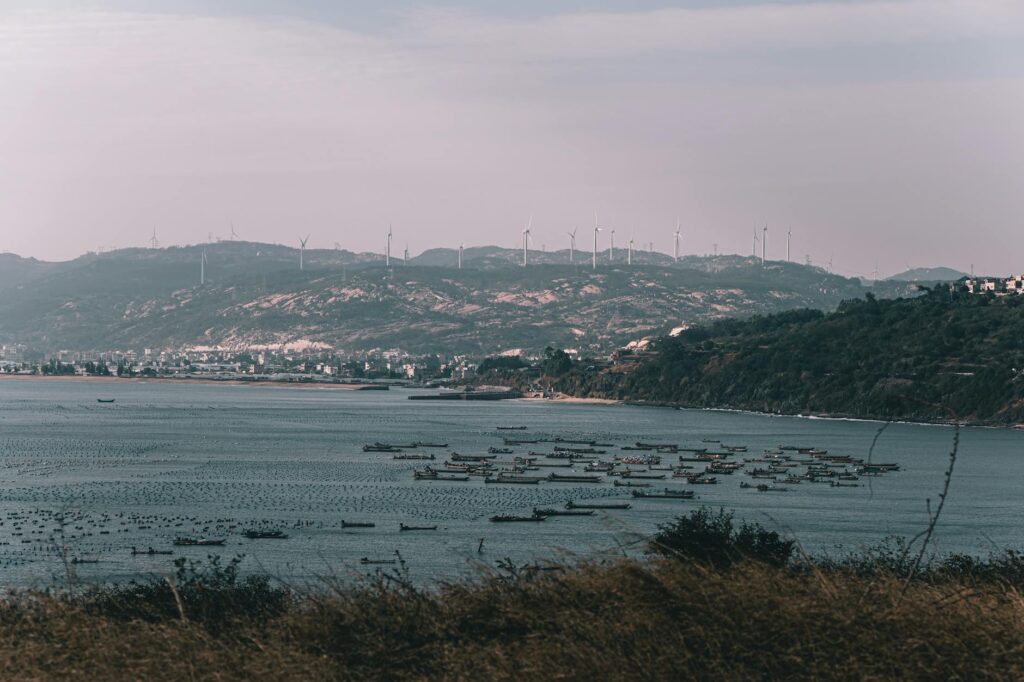
Photo by toter yau
Conclusion
The Faroe Islands offer a raw, rugged alternative to Iceland’s dramatic but more traveled wilderness. Their wild cliffs, shifting weather, unique birdlife, and close-knit culture create an experience that feels more personal and untouched. For travelers craving solitude alongside powerful nature, the Faroes stand out as a northern treasure that combines natural beauty with cultural depth.
As tourism grows, the islands focus on protecting their environment and traditions, making responsible travel key to preserving this unique place. Considering the Faroe Islands means choosing a destination where the wild North Atlantic still feels vast and alive, inviting exploration beyond Iceland’s familiar paths.
If you’re ready to explore one of the North Atlantic’s most intriguing corners, the Faroes await with open skies and quiet fjords—an inspiring choice for your next adventure.
